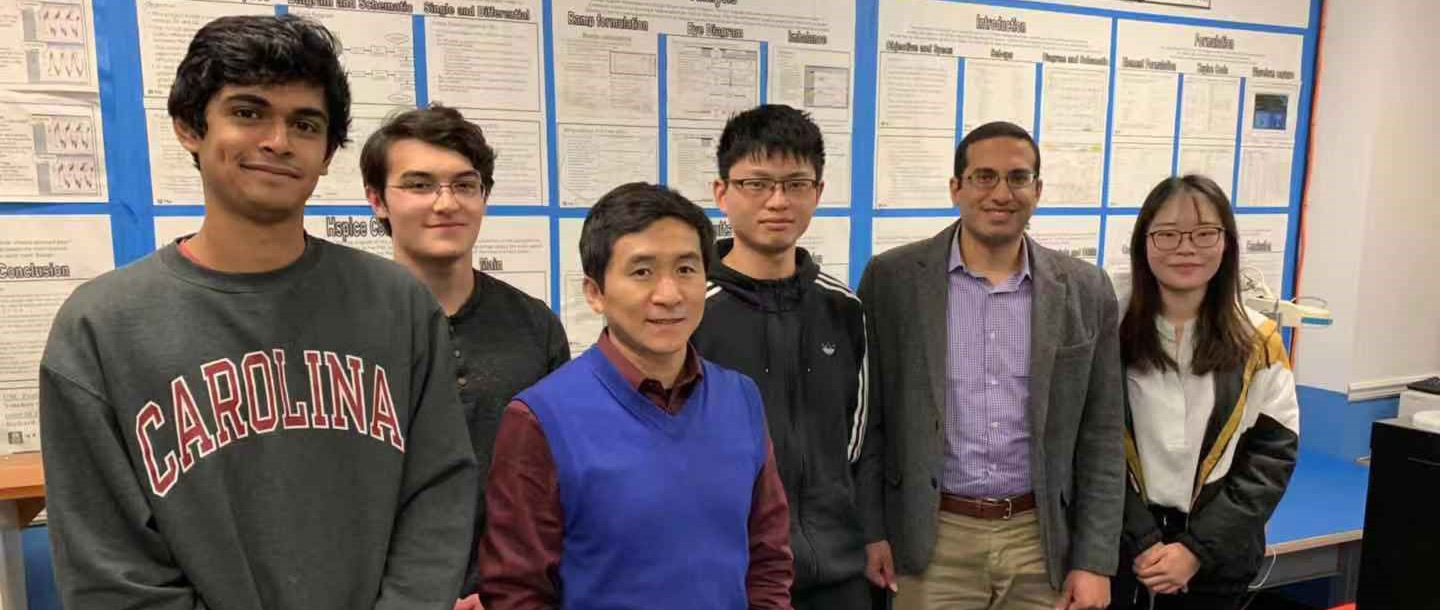Press release from Naval Surfaces Warfare Center Dahlgren Divison
DAHLGREN Va. — Benjamin Franklin once said, “Tell me and I forget. Teach me and I may remember. Involve me and I learn.” Hands-on learning uniquely teaches others beyond simply hearing or viewing materials. Across the United States and its territories, the Naval Engineering Education Consortium (NEEC) creates unique learning opportunities for college students, professors and naval centers, including Naval Surface Warfare Center Dahlgren Division (NSWCDD).
Over the last two years, a team at the University of South Carolina (UofSC) led by electrical engineering professor Guoan Wang, developed and tested “novel radio frequency (RF) electrical components that will enable miniaturization and enhancement of high-performance naval communication, electronic warfare and radar systems” in partnership with NSWCDD, according to the project’s summary.
The UofSC team includes Wang, one doctoral student, two undergraduates and a visiting undergraduate summer intern. A current senior at UofSC in the honors college, David West learned about the project opportunity during his sophomore year.
“We are developing reconfigurable techniques with integrated novel materials that allow RF components to operate at different frequencies,” explained West. “If you wanted to have a component that works for different applications, you would need to be able to reconfigure it to fit what you need.”
According to Wang, this is not a new concept.
“Many technologies have been studied and applied in real applications before,” he said. “However, the proposed method to overcome the limitations of current reconfigurable technologies is innovative and has great potential to revolutionize reconfigurable RF technology for DoD communications, sensing and electronic warfare systems.”
Reconfigurable technologies allow for spectrum efficiency and lower power consumptions overall, as well as the overall expense of a project.
“That is a benefit of working with [the UofSC team]: they do much more of the exploratory work and the initial research and development,” said NSWCDD Electromagnetic and Sensor Systems Department Technical Lead Steve Thomas. “Since they are not trying to develop a product and sell it on the market, they are much more open to discovering how things work and making sure they understand it. The techniques they are using and engineering can be applied to other areas [at NSWCDD].”
For students like West, the exposure to the NEEC projects bridges the gap between commercialized and Department of Defense-supported technologies.
“It’s nice to know that [our research and development work] is going to be used for a wide range of things and that our service members are going to benefit from it,” said West.
The project gave West a one-of-a-kind opportunity. “We submitted a proposal to the Microwave Theory and Techniques Society division of Institute of Electrical and Electronics Engineers (IEEE), and they came back with a scholarship offer.” As one of ten students from around the world to receive the scholarship, West attended the International Microwave Symposium in Atlanta last June. “Getting the scholarship and doing the research has pushed me in the direction of graduate school,” he said. “It reminds me that I can do this.”
Like many workplaces and schools around the world, the project screeched to a halt when the pandemic forced the world to go virtual. “They were not able to finish everything they wanted to do on this effort,” said Thomas. “Many of the university lab facilities were closed down for a long period of time. Their work is part modeling and simulation, but also part measurement and fabrication – and they couldn’t do a lot of that for most of last year.”
In response to the timeline changes, the UofSC team requested a no-cost extension on the project to keep the work going without more government funding.
“RF adaptive technologies have some limitations. We want to provide more flexibility in design and better suitable for practical applications, so we can visualize these old technologies on new platforms with additional capabilities,” said Wang. “That way, we can achieve future communication requirements to meet all the Navy mission capabilities.”
This NEEC project is one of eight active partnerships between NSWCDD and various colleges and universities across the country.
